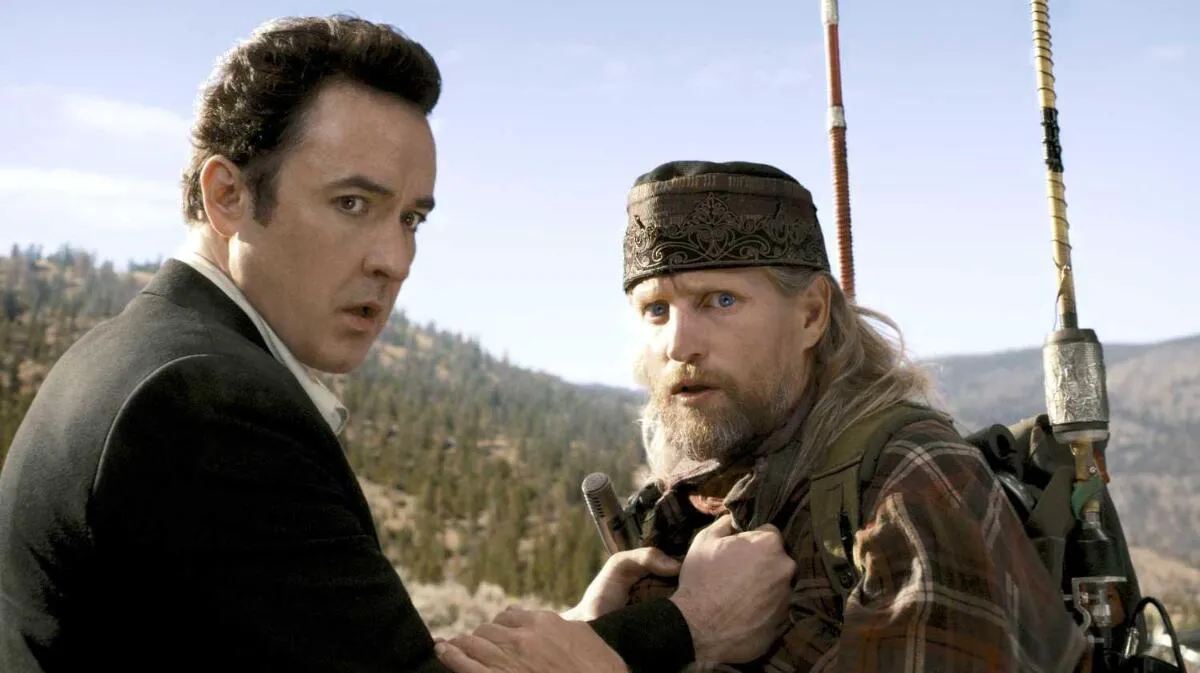A Truly Impressive Apocalyptic Film for Our Times
The Earth’s core, influenced by solar radiation, has gone haywire. Earthquakes and tsunamis plague the globe. A struggling writer and a Russian oligarch, each with their families, hope to survive the cataclysm.
“2012” is, in a way, the definitive disaster movie. It’s the most lavish, the most visually stunning, and the most ambitious. It closes the book on the genre, exhausting its possibilities. Roland Emmerich couldn’t have made this film earlier – the special effects would have been too expensive, and the right concept hadn’t yet emerged. But now… Las Vegas crumbles! San Francisco splits in two! Hawaii is incinerated! The Himalayas are submerged! Volcanoes erupt! Earthquakes devastate! The destruction of St. Peter’s Basilica appears almost as a vignette, while the annihilation of the White House is treated as a lighthearted joke.
Emmerich gathers all the meteorites from “Armageddon,” all the water from “Titanic,” and all the giant waves from “The Abyss” (or “Deep Impact,” or his own “The Day After Tomorrow”) and throws them at the audience all at once. Every five minutes, he flauntingly presents a flawlessly rendered cataclysm that, by older standards, would have sustained an entire film. “2012” can be seen as the amusement of a person who used to organize soccer matches but then grew tired and, like Hottabych, decided to release all 22 balls onto the field at once. Or as the whim of a pornographer who realized that he had exhausted the viewer with paired performances and, in his new film, staged a colossal multi-figure orgy that is meant to crown his entire body of work. But in reality, the key word in both comparisons is “tired.”

Previously, Emmerich regularly invented non-existent problems for his viewers (aliens, Godzilla) with the sole purpose of solving them together with the heroes, then coming to their senses and remembering that they stand on solid ground, live in the strongest country in the world, and that everything is actually fine. The White House was destroyed – no big deal, we’ll rebuild it in the same place, even more beautiful than before. Now Emmerich is tired of reassuring Western civilization: these are half-measures. He destroys it – boring, rotten, preoccupied – for real, in order to build his own, fresh, renewed one. In “The Day After Tomorrow,” the Northern Hemisphere perished, and Americans rushed to the borders of Mexico, which they had despised just yesterday, begging to be let in. In “2012,” the hint is even more explicit: now India is cool (they have the most far-sighted scientists), China (they know how to build arks the fastest), Russia (they have the biggest planes), and Africa (“Africa has risen!” – a character states, studying the changed landscape).
In general, anything is cool except the USA and Europe: they are depopulated, they are destroyed, and that’s right. It’s as if in his old age, a left-wing student from a German film school has awakened in Emmerich and is screaming, wanting to reshape the world with the sharp edge of celluloid film. Of course, in practice, “2012” is still primarily a set of attractions, an apocalyptic amusement park. Of course, for the viewer, it is simply a safe and, in a way, psychotherapeutic experiment. As always with Emmerich, the key characters survive (this resembles the fantasy of a six-year-old child who is trying to comprehend the fact of their mortality and mentally conjures up scary tales with the obligatory ending “Everyone will die, but I will remain”). What these survivors will do next is unclear, but in any case, the old fears are gone. The remade world has lost all its possessions, which it cherished so much, but has gained freedom.
The last line of the film is “I don’t need waterproof underwear anymore.” A very fitting ending for the definitive disaster movie, as Roland Emmerich sees it.